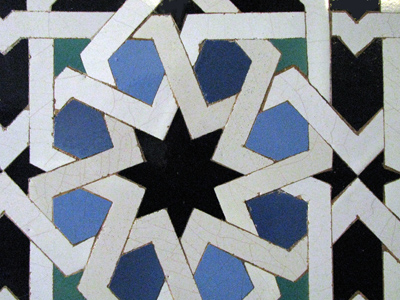Geometric shapes are nothing new to you. You’ve been working with them since the first grade, even earlier than that. Still, as you advance in school, becoming very familiar with them is essential. You will need to measure them, be able to distinguish the shapes quickly by sight, determine their volume and, if you ever go into the field of construction or architecture you will definitely come across all different geometric shapes that you will need to incorporate into your designs and know how they will work in those designs.
The very basic geometric shapes include the circle, the square and the triangle. But those are just the beginning to the families of geometric shapes.
This quiz will not cover all of the geometric families but it will cover the following:
Circles
Pyramids
Prisms
Triangles
Polygons
The Circle, as you may recall, included several parts such as the circumference/perimeter, the center point, the radius, the diameter, the chord, segments, sector and arc.
The Pyramid is usually one of the more popular shapes. Most people, when they hear the word “pyramid” think of the ancient pyramids of Egypt or South America. The pyramid shape is just that - an ancient shape. What mathematical information you should know about a pyramid is that it is a three dimensional shape. It is created by having a polygon as its base and then three to four triangles as its sides or faces and the triangles then meet each other at the vertex. There are a number of different types of pyramids that include:
- triangular pyramid - This is when the pyramid has three side faces and a base that are all shaped in a triangle.
- square pyramid - The Egyptian pyramids are square pyramids. This is when the four sides/faces are triangles but the base is a square.
- rectangular pyramid - This is when the pyramid has four sides in the shape of triangles but the base is in the shape of a rectangle.
- pentagonal pyramid - When you see the word “pentagon” you know that there are 5 sides so a pentagonal pyramid will have five sides that are shaped as a triangle and its base will be a pentagon.
- hexagonal pyramid - When you see the word “hexagon” you know that there are 6 sides so a hexagonal pyramid will have six sides that are shaped as a triangle and its base will be a hexagon.
The Prism is mostly associated with the study of light as we can see the colors of a rainbow through a prism. Prisms, however, come in a number of shapes, including the cube. These prisms get their name from the shape of its front and back face. The types of prisms include:
- trianglular prism - This prism has a total of 5 sides with the back and front sides in the shape of a triangle and the remaining two sides and the base are in the shape of rectangles.
- square prism - This prism has a total of 6 sides with the front and back sides being in the shape of a square and the three remaining sides and the base are in the shape of rectangles. However, a cube is also considered a square prism where all six sides of the prism are squares.
- rectangular prism - This type of prism also has six sides but each of the six sides are in the shape of a rectangle. A good example of a rectangle prism is a cereal box.
- pentagonal prism - Again, when you see the word “pentagon” you should immediately envision five sides. The pentagonal prism is made up of two pentagons that are its front and back faces and then five rectangles that surround them giving you a total of 7 sides.
- hexagonal prism - This is when the shape has the front and back sides shaped into a hexagon (six sides) and then six rectangles surround the hexagon, connecting to each other and giving you a total of 8 sides.
- octagonal prism - The word “octagon” tells us that there are 8 sides. An octagonal prism has a front and back side that are each in the shape of an octagon and these are connected or joined together by eight rectangles giving you a total of 10 sides.
The Triangle can be used to create many other geometric shapes, including the pyramid discussed above. The triangle, however, also has its own series that include the following:
- equilateral triangle - This type of triangle has three sides that are of equal length.
- scalene triangle - In this type of triangle all three sides are of different lengths, no two are alike or equal.
- isosceles triangle - In this type of triangle, two sides are equal in length with the third side of a different length.
- right triangle - This is when one of the angles in a triangle is a right angle, i.e., 90 degrees.
- obtuse triangle - This is when the angles of a triangle measure between 90 degrees and 180 degrees.
- acute triangle - This is when the angles of a triangle measure between 0 degrees and 90 degrees.
The Polygon is distinguished by the number of sides. These include the pentagon (5 sides), the hexagon (6 sides), the septagon (7 sides), the octagon (8 sides), the nonagon (9 sides), the decagon (10 sides) and the dodecagon (12 sides).
The thing about geometric shapes is that the number and types of shapes that can be made is almost limitless but, luckily, you will not have to address most of those. However, now that you’ve had a change to read through this introduction, let’s see just how many shapes you can distinguish!








